#saartjie
Explore tagged Tumblr posts
Text
Sarah Baartman
Sarah Baartman's tragic story is a heartbreaking narrative of exploitation, racism, and the dehumanisation of an African woman in the early 19th century. Born in South Africa's Eastern Cape in 1789, Baartman faced a life marked by hardship and loss. Orphaned at a young age, she entered domestic service in Cape Town after her partner was murdered, and their child died.
In 1810, under questionable circumstances, Baartman signed a contract with British ship surgeon William Dunlop and entrepreneur Hendrik Cesars, agreeing to travel to England to participate in shows. Her distinctive physical features, characterised by extremely protuberant buttocks due to steatopygia, made her a spectacle in London's Piccadilly Circus, where she was exhibited in skin-tight, flesh-coloured clothing adorned with beads and feathers. The fascination with her large buttocks reflected the prevailing fashion of the time, but Baartman's public display in so-called "freak shows" also highlighted the darker undercurrents of racism and colonial exploitation.
Baartman faced a tumultuous life in Europe, performing on stage, enduring private demonstrations, and facing questions about whether she willingly participated or was coerced. The British Empire had abolished the slave trade in 1807, but Baartman's treatment raised ethical concerns, leading to a court case against her employers, although they were not convicted.
Moving to Paris in 1814, Baartman continued her exhibitions under the nickname "Hottentot Venus." She faced further exploitation, possibly engaging in prostitution, and ultimately succumbed to illness, dying at the age of 26 in 1815. The postmortem exploitation continued as Georges Cuvier, a naturalist, dissected her body, preserving her skeleton, brain, and genitals. These remains were exhibited in Paris's Museum of Man until 1974, a grotesque testament to the objectification of Baartman.
The journey of Sarah Baartman's remains back to her homeland was a protracted one. Finally, in 2002, after years of advocacy and efforts, her skeleton, brain, and genitals were repatriated and laid to rest in the Gamtoos River Valley, where she was born. Baartman's story remains a symbol of the intersection of racism, sexism, slavery, and colonialism, prompting debates and discussions about the historical exploitation and the ongoing fight against injustice.
19 notes
·
View notes
Text
The greatest showman and the erasure of disabled history (cw: historical ableism and racism)
I haven't watched the greatest showman. It watched a review of it. I won't watch it, I won't even pirate it, because watching a movie like that would be deeply upsetting to me.
This movie is about P.T Barnum, a real person, a horrible, ableist, racist, disgusting person, who should not be celebrated.
In this movie, he's a saviour for disabled "freaks", a word that this movie believes he has the right to reclaim for disabled people.
In reality, he exhibited disabled people and people of colour as "freaks" to be ogled and jeered at, to be abused and discarded when the novelty wore off, to exist for the entertainment of non-disabled whites.
This movie is not about the disabled "freaks". It could never be, because that would require showing the truth about freakshows, and it would give the disabled characters too much agency. This is a tragedy in my eyes, that we never see the stories of the actual disabled people of colour.
It's not about the disabled person who joined the freakshow to provide for their family.
It's not about the disabled black person who was lied to and deceived into joining.
It's not about the disabled slave who was sold into the freakshow.
It's always the non-disabled person who profiting off of the humiliation and abuse they subject their disabled workers and slaves to. And this is portrayed as something inspiring, and something the "freaks" should've been grateful for.
It's never about Joice Heth, or Saartjie Baartman, or Charles Sherwood Stratton, or the indigenous people who were tricked kidnapped or enslaved, or the disabled people who never saw their family again, it's about PT fucking Barnum.
I've seen disabled people find empowerment in this movie, and i'm happy for them. But the greatest showman was not made for disabled people to feel empowered by "embracing their differences". It was made for non disabled people who want to be a saviour to disabled people. It's for non-disabled people who feel guilty about objectifying disabled people, to reassure them that disabled people are actually grateful. It shows disabled people succeeding, but only because they cater to non-disabled people. It's made to justify ableism to non disabled audiences.
This movie is disgustingly disrespectful, to the victims of P.T Barnum. Many of the "freaks" where based on real people. Real people who were often sold into slavery, abused, tortured. Real people who this movie turns into puppets who only exist to make P.T Barnum look like a saint, to fufill non-disabled fantasies of being mother teresa to a disabled kid.
This movie will go down as a disgusting, shameful movie, and I hope the true stories of the ableism and racism in freakshows become widely known, until freakshows and their members are given the respectful and solemn recounting they deserve.
#pt barnum#the greatest showman#racism#colonialism#ablism#ableism#freakshows#history#whitewashing#ablewashing#musicals#Joice Heth#Saartjie Baartman#Charles Sherwood Stratton#disabled history#disabled#disability
25 notes
·
View notes
Text
[Georges] Cuvier’s anatomical fixation with [Saartjie] Baartman largely conformed to the convention of privileging sexual(ized) anatomy when it came to the “female specimen.” Thus, although he otherwise “believed skulls to be the most important evidence” for a science of racial difference, it was not Baartman’s skull or her locutionary facility across multiple languages but rather her “genitalia, breasts, buttocks, and pelvis” that fascinated Cuvier. Of paramount interest were, on the one hand, Baartman’s supposedly steatopygic buttocks and, on the other, the “Hottentot apron,” or putatively elongated vaginal labia minora. Much to Cuvier’s and [Henri] de Blainville’s consternation, Baartman resisted the full extent of their scopic ambition. “She kept her apron concealed,” Cuvier lamented, “either between her thighs or still more deeply.” At once violently penetrating and yet unable to fully access something irreducible within her interiorized flesh, Cuvier’s (dis)possessive gaze strains against a limit, an aporia within the logic of calculation and valuation, which must nevertheless be made to appear “as a barrier to be overcome.”
Rizvana Bradley, Anteaesthetics: Black Aesthesis and the Critique of Form
#w#rizvana bradley#antiblackness#scientific racism#pornotroping#saartjie baartman#georges cuvier#henri de blainville#*
0 notes
Text
The inquiry accepted the claim that Baartman was free, was working as she chose and would be paid half of the profits of her exhibition.
"Normal Women: 900 Years of Making History" - Philippa Gregory
#book quote#normal women#philippa gregory#nonfiction#inquiry#saartjie baartman#sarah bartman#freedom#working#exhibition#hottentot venus#sideshow
0 notes
Text
Saartjie, Chantal and I
Hair held down by a red cloth Sweat beading on her forehead Eyes filling up with light and tears Nostrils flaring Words and sounds spilling over her lips Dripping down her chin Encircling her neck And draping her shoulders Arms held high, strong Hands flowing through the air, unhindered Breasts, alive, engorged Covering a pumping heart ready to burst Skin expanding and contracting over the drum…
View On WordPress
#Africa#Artscape#body image#Chantal Loïal#Chrysalis#dance#Difé Kako#Hottentot#Sara "Saartjie" Baartman#Slave#Slavery#South Africa#Venus
0 notes
Text

Human zoos in the West were a feature of colonialism. They fed a fascination for exotic lands and a grotesque pseudo-science that focussed on the physiology of so-called 'savages.
Africans were exhibited in primitive settings for the enjoyment of spectators at trade fairs and travelling shows, helping legitimise the domination of 'lesser' beings by supposedly 'superior' Western civilisations.
One famous 'exhibit' was Saartjie Baartman, who was also known as Sarah Bartmann. She was a South African woman who attracted crowds due to a genetic condition (steatopygia), resulting in a highly protruded posterior. She was shipped to London in 1810 and spent most of her life on display. In 2002, her remains were repatriated and buried in South Africa. Another infamous exhibition was unveiled at the 1958 World Expo in Brussels, Belgium. It featured Congolese people in their mocked-up 'village' at the venue.
Awareness of the foul, dehumanising practice is slowly being raised. A Paris exhibition in 2011 called
"Inventing the Savage" showed how human zoos laid the foundations for racism against Africans. It was the brainchild of the former French footballer, Liliane Thuram, whose Caribbean family suffered under slavery. Though human zoos do not exist anymore, the effects of colonisation and exploitation of coloured people persist to this day. That's why we'll keep posting about them.
#social justice#current events#human rights#black history#african history#history#history posting#history tumblr#history side of tumblr#history lover#important#important to know#us history#usa history#american history#united states history#colonialism#western imperialism#american imperialism#us imperialism#political#political posting#politics#africa
57 notes
·
View notes
Text
With all the stuff about the Titanic submarine I keep thinking about the tourism of sites of mass tragedy and human remains. It’s a really important conversation that I haven’t seen many people discuss outside of historical and final care provider circles.
The Titanic is a grave. The only reason that submarines are even permitted to go through it is because it’s in international waters. Other shipwrecks, like in Lake Superior, are frequently declared grave sites and have restrictions or bans on exploration of their structure. At the very least, there should be incredibly strict restrictions on Titanic exploration. It should not be a tourist destination. There may be still be human remains in certain parts of the ship, and the mud around the ship is filled with corpses. Considering the tragedy only happened 100 years ago, this tourism is very disrespectful. Also, exploration of the Titanic could potentially damage the structure, which would hinder academic research as well as further disrespect the dead and those who remember them. The structure will not be around for much longer.
Tourism of sites of mass tragedy can also be very dangerous. Obviously we know why the Titanic is dangerous, but it goes beyond that. Oftentimes people are not aware of the danger, or are reassured by authority that it is safe. For instance, many people visit active volcanoes, and some have been injured or killed by eruptions. For some, the danger is a feature. There are people who visit Chernobyl, an even more recent site of mass tragedy than the Titanic, despite being aware of the danger of radiation. It’s thrill-seeking, but instead of a rollercoaster people are putting themselves in danger to walk through human remains.
Our natural fascination with mortality leads many to disrespect the dead. The viewing of human remains in museums is a big debate, and I personally don’t think that we should display human remains without previous consent from the person. Imagine how you would feel if yourself or a loved one was displayed in a museum, or had your resting place constantly disturbed by tourists.
It’s also important to note that this type of tourism disproportionately impacts people of colour. Eurocentric society systematically dehumanizes the bodies of POC, and this becomes crystal clear in how we treat their remains. Egyptian mummies remain on display in museums despite the disapproval of many Egyptian people. Many black bodies, particularly of women, have been displayed in museums, such as Saartjie Baartman who was finally buried in 2002. Indigenous human remains are also frequently displayed, and ancient burial sites are viewed as cursed land and get destroyed by construction. The remains of people across Asia have been sold and displayed, with recent displays posing the human remains of Chinese prisoners. Most human bones being sold originated from graverobbing the graves of Asian and Indigenous people. None of these people consented to this treatment, and these communities are still being harmed by the commodification of their dead.
Engaging with sites of mass death needs to be done respectfully. The dead deserve our care.
It’s natural to be curious about tragedy and death, and engaging with our own mortality can be healthy. There are ways to engage with these topics respectfully. Many online resources are available to learn about death, with my personal recommendation being the youtube channel Ask a Mortician. Visiting cemeteries is another great way to engage with death, so long as you abide by the rules and have good intentions. There are some great documentaries about instances of mass death, with many available for free on youtube. You can visit designated memorials of the sites. The Titanic itself has a section in a graveyard in Halifax. I also recommend donating to and supporting the efforts of communities to have their human remains and cultural artifacts repatriated.
Sites of mass death need to be treated with the same respect as cemeteries. They are important and full of education, but we need to remember that these are real people. The dead are not fantastical oddities; they are us.
244 notes
·
View notes
Text
update: im mass murdering europe
sometimes my brain like grasps onto a topic n goes corgi on lettuce abt it and its fun its fun but why are there 23 sources on my google docs abt the hottentot venus
3 notes
·
View notes
Text
I wrote this public essay as a response to this image below, an image that brought forth a racialized and antiblack pornotropic sexual violence I was already quite aware of but which became vertigo inducing upon seeing this tweet. In this essay, I write about the hypersexualization and pornotroping of the Black body, and resulting fragmentation. I write about the use of power through miscegenation, the thrill of the forbidden desire, and reproduction as the mechanization of the racial stain. At the time the essay was written, K*** hadn't lifted the mask in terms of his affections towards Nazism and his admiration, even worship of Hitler. And he was still with Kim Kardashian, which is to keep in mind when reading specific paragraphs. If you'd like to tip me, Pp [email protected] and K0fi.

Yeahhhhh...

Kim Kardashian by Jean-Paul Goude
This screenshot and photograph best visually sum up the whole essay. Here are excerpts:
The bedroom slashes through certain interracial sexual encounters, leaves an elemental wound. Sperm and blood. The room is haunted and there's no escape possible. Nor is, in many cases, escape wanted. Hysteria's lurking behind the faintest gleam of civility; the sexual rupture at the heart of miscegenation puts in relief the pained, dislocating hi(story) of Black flesh.
and
A meager antiblack imagination has cast Black bodies not only as ugly but as grotesque; the obsessive reordering of its sexual physiology as inherently violating and aggressive derives from and feeds on the deep anxieties around interracial coitus. Yet, domination forecloses neither proximity, nor violent intimacies (h/t Christina Sharpe); sexual terrorism traverses the color line(s), engendered by the inchoate fantasies of antiblackness.
and
Jean-Paul Goude photographs Kim Kardashian for Paper, citing an earlier photograph by him, Carolina Beaumont, excerpted from the aptly named book "Jungle Fever". Both photographs coalesce, crystallize around the violated, visually cut through body of Saartjie Bartman; she's everywhere and nowhere. Violently present in and through her spectral absence.
The photograph blurs, details collapse; Kim Kardashian's now holding a penis, certainly Kanye's Black dick, as it shoots ropes of sperms onto her store bought bottom. The act of consumption's manifold; Kardashian's performing a twisted, unrecognizable reflection of Black femininity; she's casually consuming the cultural residue of visual Black female representation (h/t Sydette Harry); she's gleefully, cheerfully even, taking in Black masculine sexuality. The Black man doesn't need to be there for the fantasy to operate. Like Saartjie Baartman, his absence scars the image.
and
Once again, Black cishet men utilize race as a device to rid themselves of the dirt and funk of Blackness (h/t Toni Morrison); they wield their lover's racial ambiguousness, or her perceived exoticity as a way to (re)produce an offspring awash of any visible racialized Blackness. Racially ambiguous, or appropriately "mixed looking" (often meaning light skinned, clear eyed, bouncy haired) girl children dwell in a space of simultaneous increased value and disturbing commodification. In many ways, they're indeed factory items, the result of a reenactment of breeding, widgets whose socially constructed beauty had been cooked out through the obsessive looking at little girls like them. In one of the photographs above, a girl child is wearing a shirt announcing she's playdate material as the camera catches her in the act of lifting her curly, abundant mane.
The gestures are innocent, the child unaware, but the user of the photograph, the photograph itself ( and the photographer) are eloquent in their quiet sexualization. She's all at once already marked as a potential (re)production machine, made to push out identically racially ambiguous widgets, a trophy, symbol of the erasure of a tainted and shameful Blackness, and an exotic artifact whose implied Blackness still ensures the assumed absence of innocence. Race's a prosthesis and the Black man's a cyborg, an automated figure whose sexual consumption's tied to a devouring hunger for power. But who's screwing who ?
35 notes
·
View notes
Text
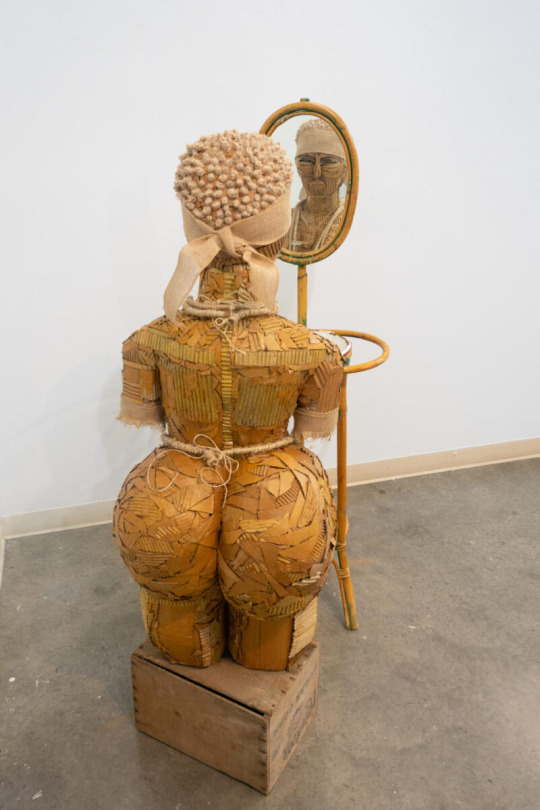
Shayna Sutton
Saartjie
9 notes
·
View notes
Text
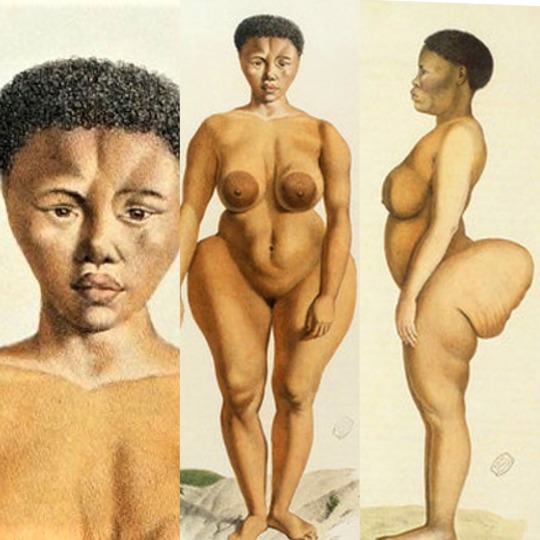
Sara 'Saartjie' Baartman was born in 1789 at the Gamtoos river in what is now known as the Eastern Cape. She belonged to the cattle-herding Gonaquasub group of the Khoikhoi. Sara grew up on a colonial farm where her family most probably worked as servants. Her mother died when she was aged two and her father, who was a cattle driver, died when she reached adolescence.
Sara married a Khoikhoi man who was a drummer and they had one child together who died shortly after birth.
Due to colonial expansion, the Dutch came into conflict with the Khoikhoi. As a result people were gradually absorbed into the labour system. When she was sixteen years old Sara's fiancé was murdered by Dutch colonists.
Soon after, she was sold into slavery to a trader named Pieter Willem Cezar, who took her to Cape Town where she became a domestic servant to his brother. It was during this time that she was given the name 'Saartjie', a Dutch diminutive for Sara.
On 29 October 1810, Sara allegedly 'signed' a contract with an English ship surgeon named William Dunlop who was also a friend of Cezar and his brother Hendrik.
Apparently, the terms of her 'contract were that she would travel with Hendrik, Cezar and Dunlop to England and Ireland to work as a domestic servant, and be exhibited for entertainment purposes. She was to receive a 'portion of earnings from her exhibitions and be allowed to return to South Africa after five years. Two reasons make her 'signing' appear dubious. The first is that she was illiterate and came from a cultural tradition that did not write or keep records. Secondly, the Cezar families experienced financial woes and it is suspected that they used Sara to earn money.
Sara Baartman's large buttocks and unusual colouring made her the object of fascination by the colonial Europeans who presumed that they were racially superior. Dunlop wanted Sara to come to London and become an oddity for display. She was taken to London where she was displayed in a building in Piccadilly, a street that was full of various oddities like “the ne plus ultra of hideousness" and "the greatest deformity in the world". Englishmen and women paid to see Sara's half naked body displayed.
Sara ‘Saartjie’ Baartman died in Paris on December 29, 1815 at the age of 26 for unknown reasons. Even after her death, many of her body parts would go on display at the Musée de l’Homme (Museum of Man), in Paris to support racist theories about people of African ancestry. Some of the body parts remained on display until 1974.
In 1994 South African President Nelson Mandela formally requested that Baartman’s remains be returned to South Africa. On March 6, 2002, her remains were returned and buried at Hankey in the Eastern Cape Province.
•••
Sara “Saartjie” Baartman, nació en el año 1789 cerca del Río Gaamtoos, hoy en día conocido como Cabo Oriental. Ella pertenecía a un grupo de los Khoikhoi que se dedicaba a pastorear ganado, los Gonaquasub. Sara creció en una granja colonial, lo más probable es que su familia solían ser sirvientes en esta granja. Su madre falleció cuando ella tenía dos años y su padre, quien era un pastor ganadero, murió cuando ella llegó a la adolescencia.
Sara se casó con un hombre Khoikhoi que era percusionista y tuvieron un hijo juntos, pero falleció poco después de nacer.
Debido a la expansión colonial, los Holandeses entraron en conflicto con los Khoikhoi. Cómo resultado, las personas fueron absorbidas gradualmente por el sistema laboral. Cuando Sara tenía 15 años, su prometido fue asesinado por colonizadores holandeses.
Poco después, fue vendida en esclavitud a un comerciante llamado Pieter Willem Cezar, quién la llevó a la Ciudad del Cabo, dónde se convirtió en sirvienta doméstica para el hermano de él. Fue durante este tiempo que se le había dado el nombre de “Saartjie”, un diminutivo de Sara en holandés.
El 29 de octubre de 1810, presuntamente Sara había firmado un contrato con el cirujano de un barco, su nombre era William Dunlop, quién era amigo de Cezar y su hermano, Hendrik.
Aparentemente, los términos de su contrato era que viajaría con Hendrik, Cezar y Dunlop a Inglaterra e Irlanda para trabajar como sirvienta doméstica y ser exhibida con propósitos de entretenimiento. Ella recibiría “una porción de las ganancias de sus exhibiciones y se le permitiría regresar a Sudáfrica después de cinco años.” Hay dos razones por las cuales esta firma es dudosa. La primera es porque Sara era analfabeta y venía de una tradición cultural en dónde no se sabía escribir, tampoco mantenían expedientes. La segunda es porque Cezar y su familia estaban pasando por dificultades financieras y se sospecha que estaban utilizando a Sara para ganar dinero.
Los grandes glúteos de Sara Baartman y su color inusual la convirtieron en un objeto de fascinación por parte de los europeos coloniales que presumían ser racialmente superiores. Dunlop quería que Sara fuera a Londres y que se convirtiera en una exhibición de rareza. Ella fue llevada a Londres y fue exhibida en un edificio en Piccadilly, una calle que estaba llena de varias rarezas, como: “el hombre más horrible” y “la deformidad más grande del mundo”. Los ingleses, tanto hombres como mujeres, pagaban por ver el cuerpo desnudo de Sara.
Sara ‘Saartjie' Baartman murió en Paris el 29 de diciembre de 1815 a la edad de 26 años, por causas desconocidas. Incluso después de su muerte, muchas partes de su cuerpo fueron exhibidas en Musée de l’Homme (Museo del Hombre) en Paris, para apoyar las teorías racistas acerca de la genealogía africana. Algunas de las partes de su cuerpo siguieron en exhibición hasta el año 1974.
En 1994, el presidente Sudáfricano Nelson Mandela, solicitó formalmente que los restos de Baartman fueron regresados a Sudáfrica. El 6 de marzo del 2002, sus restos fueron regresados y fue enterrada en Hankey, una provincia ubicada en Cabo Oriental.
#blacklivesmatter#blacklivesalwaysmatter#english#spanish#blackhistory#history#share#read#blackpeoplematter#blackhistorymonth#knowyourhistory#culture#like#historyfacts#follow#blackwomenmatter#blackbloggers#black women#nelson mandela#africanhistory365#black history#black history is american history#african history#blm#newpost#black women matter#blackownedandoperated#blackhistoryyear#black woman#london
56 notes
·
View notes
Text
Goddamn finally. Charles Bryne's remains will no longer be on display in the museum of the man who paid people to steal his body. Seriously, it's an appalling story and I highly recommend checking out the article and this video from Ask A Mortician about Charles Bryne, as well as this one about Saartjie Baartman.
25 notes
·
View notes
Text
In Les Curieux en extase, [Saartjie] Baartman’s figure is overtly conscripted into this operation of expropriative displacement, positioned as the medium of her own dissimulation. This black mediality is perhaps most obvious from the vantage of the Englishwoman, from whose gesture the piece tellingly acquires its name. Whether the “misfortune” the Englishwoman deigns to look through is taken to be Baartman’s degraded circumstances or degraded constitution is of little consequence (for the Englishwoman, they are no doubt one and the same). Baartman is made the medium for the satirical rendering of the gendered repertoires of white kinship; she becomes a prism through which one can discern the apparatic refraction of a racial-sexual economy not only from which she is barred but for which she is the constitutive interdiction. The scene of Baartman’s dissimulation is unable to escape the volatility inherent in its aesthetic ambitions, for Baartman must be simultaneously figured as the “degraded essence” of touch yet barred from any agential capacity within the phenomenology of touch she mediates in the immediacy of her “openness.” The touch of entanglement she is made to bear must be simultaneously harnessed and contained, spectacularized and disavowed. This unsustainable logic is at work in every instantiation of [Hortense] Spillers’s prominent assertion that “the captive body translates into a potential for pornotroping and embodies sheer physical powerlessness that slides into a more general ‘powerlessness.’” In fact, the analytic of pornotroping directs our attention both to the medium of (intra)exchange for these economies of visuality and touch and to a rupture within the phenomenological operations that are presumed to structure experience of these economies. Pornotroping, as Alexander Weheliye suggests, stages “the simultaneous sexualization and brutalization of the (female) slave, yet—and this marks its complexity—it remains unclear whether the turn or deviation is toward violence or sexuality.” Pornotroping thereby accentuates not only the anteriority of (anti)blackness to “modern sexuality as such,” as Weheliye insightfully contends, but also the inextricability of the violence of dissimulation from the violence of fleshly violation, underscoring a form of touch which cuts across the putatively discrete registers of visuality and tactility, though not in the reciprocal sense too often romanticized in phenomenology. For insofar as we begin from the vantage of Baartman and her dissimulated ‘body,’ there is an obvious disjunction in the phenomenological relays of seeing and touching famously elaborated by Merleau-Ponty, whereby, in Judith Butler’s gloss, “the acts of seeing and being seen, of touching and being touched, recoil upon one another, imply one another, become chiasmically related to one another.” Baartman’s figuration marks the absent center of Merleau-Ponty’s chiasmus, interdicted from reciprocity, boundlessly opened to the immediations of touch precisely so that the touch of entanglement can be mediated for the phenomenological subject.
Rizvana Bradley, Anteaesthetics: Black Aesthesis and the Critique of Form
#w#rizvana bradley#antiblackness#aesthetics#pornotroping#saartjie baartman#les curieux en extase#phenomenology#hortense spillers#alexander weheliye#judith butler#maurice merleau-ponty#afropessimism#*
0 notes
Text
2 notes
·
View notes
Photo
1869 seems a little late for the bustle but still makes sense timeline wise Saartjie Bartmann died in 1815
Also it still feels like some of these may be interchangeable or just simultaneous depending on location/class/age of white women here
Also also flapper wear was not a common sight as popular culture due to the modesty debate people had opinions on different ends and inbetweens of the spectrum
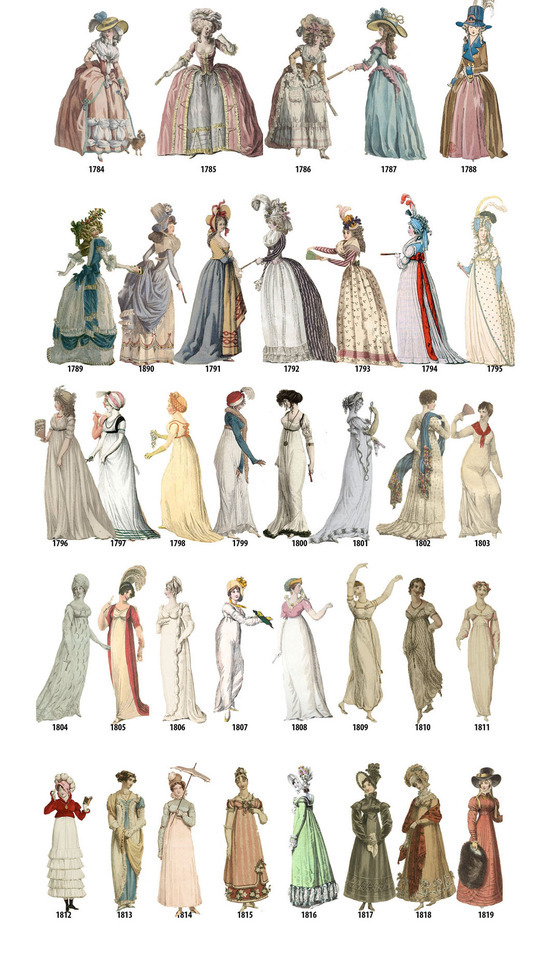
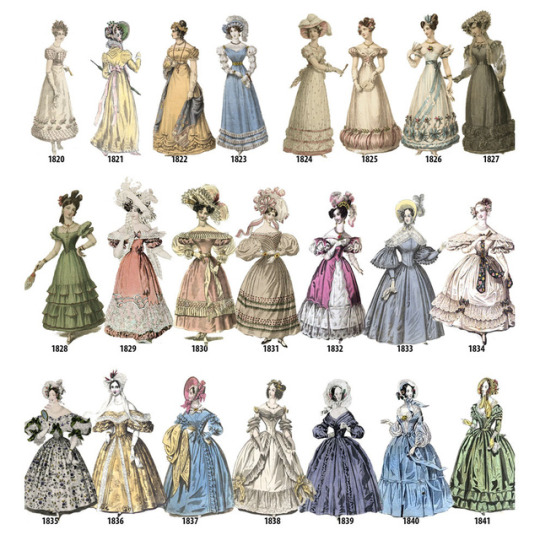
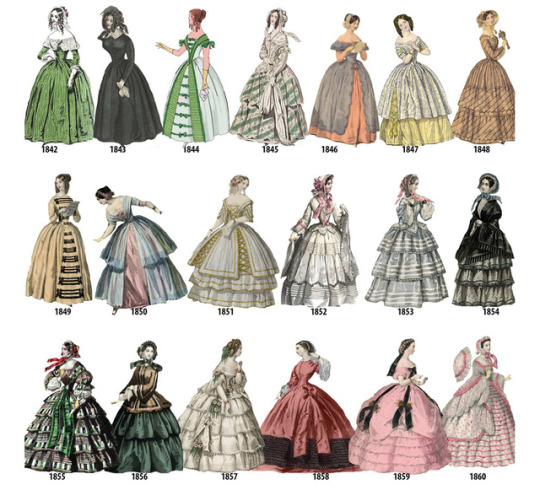
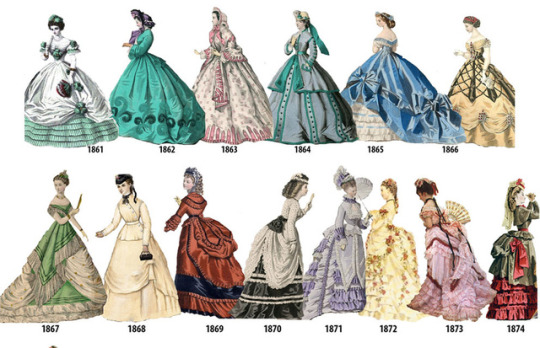
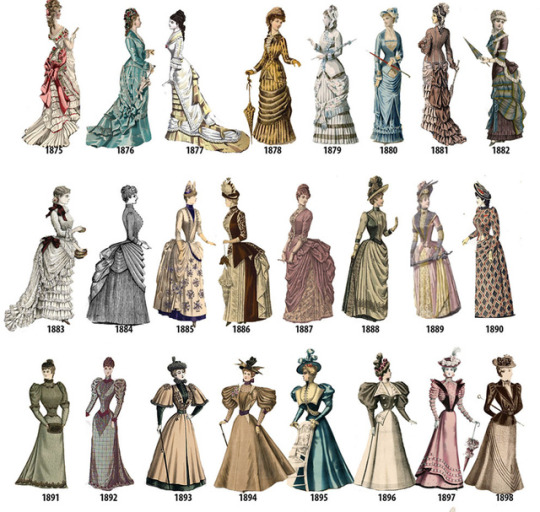
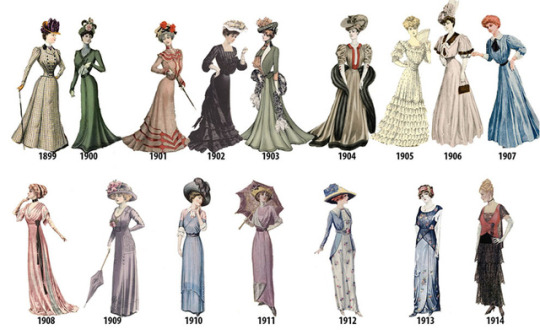


A Timeline of Women’s Fashion from 1784-1970 (source: http://kottke.org/17/07/a-timeline-of-womens-fashion-from-1784-1970)
140K notes
·
View notes
Text

Saartjie (Sarah) Baartman was a South African woman who was taken to Europe to be enslaved and exploited. She was made a spectacle where crowds could pay to see her body on display. Even after her death, her body continued to be an exhibition which continued her mistreatment. Her story shows the inhumane actions committed against Black people throughout history and how traces of this conduct can be highlighted in today's society.
Sarah Baartman's story is a crucial piece in understanding the origins in the hypersexualization of Black women and the justification of violence and abuse towards them by White colonizers. As depicted in the drawing, we can see how she was sexualized, objectified, and made to be a spectacle to provide, the very people who encaged her, with pleasure and entertainment. It's notable to point out that her oppressors did not view her as human which prompted them to openly subject her to this treatment.
0 notes